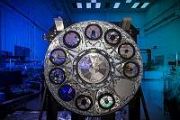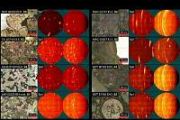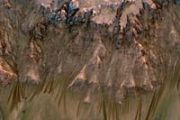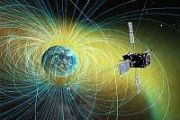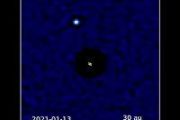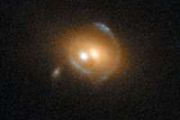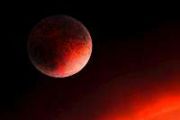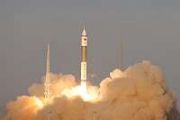
Copernical Team
Quantum computing in silicon hits 99% accuracy
PLATO clears decisive hurdle
 The European Space Agency (ESA) has given the green light to build the flight models of the spacecraft and science payload for the PLATO mission to search for extrasolar planets. The Critical Milestone Review officially concluded on 11 January 2022. This means that the production of the hardware for the space telescope system can now commence. The German Aerospace Center (Deutsches Zentrum fur L
The European Space Agency (ESA) has given the green light to build the flight models of the spacecraft and science payload for the PLATO mission to search for extrasolar planets. The Critical Milestone Review officially concluded on 11 January 2022. This means that the production of the hardware for the space telescope system can now commence. The German Aerospace Center (Deutsches Zentrum fur L Scientists are a step closer to finding planets like Earth
 The UK Space Agency has invested 25 million pounds in innovative science for the European Space Agency mission, called Planetary Transits and Oscillations of stars (PLATO), ensuring UK scientists and engineers, led by the University of Warwick, will take part in all aspects of the mission.
Caroline Harper, Head of Space Science at the UK Space Agency, said:
The critical milestone rev
The UK Space Agency has invested 25 million pounds in innovative science for the European Space Agency mission, called Planetary Transits and Oscillations of stars (PLATO), ensuring UK scientists and engineers, led by the University of Warwick, will take part in all aspects of the mission.
Caroline Harper, Head of Space Science at the UK Space Agency, said:
The critical milestone rev There are 40 billion billions of Black Holes in the Universe!
 With a new computational approach, SISSA researchers have been able to make the fascinating calculation. Moreover, according to their work, around 1% of the overall ordinary (baryonic) matter is locked up in stellar mass black holes. Their results have just been published in the prestigious 'The Astrophysical Journal'.
How many black holes are out there in the Universe? This is one of the
With a new computational approach, SISSA researchers have been able to make the fascinating calculation. Moreover, according to their work, around 1% of the overall ordinary (baryonic) matter is locked up in stellar mass black holes. Their results have just been published in the prestigious 'The Astrophysical Journal'.
How many black holes are out there in the Universe? This is one of the Worldwide coordinated search for dark matter
 An international team of researchers with key participation from the PRISMA+ Cluster of Excellence at Johannes Gutenberg University Mainz (JGU) and the Helmholtz Institute Mainz (HIM) has published for the first time comprehensive data on the search for dark matter using a worldwide network of optical magnetometers. According to the scientists, dark matter fields should produce a characteristic
An international team of researchers with key participation from the PRISMA+ Cluster of Excellence at Johannes Gutenberg University Mainz (JGU) and the Helmholtz Institute Mainz (HIM) has published for the first time comprehensive data on the search for dark matter using a worldwide network of optical magnetometers. According to the scientists, dark matter fields should produce a characteristic NASA Emergency Beacons Save Lives in 2021
Avio announces new launch service contracts for Vega C
 At the end of an intense 2021 with 3 successful Ariane and 3 successful Vega missions in about 6 months, Avio announces the signature by Arianespace of several new launch service contracts for Vega C.
In particular, a contract was signed with the Italian Space Agency for the launch of Platino 1 and Platino 2 satellites between 2022 and 2024. Platino is a lightweight advanced satellite plat
At the end of an intense 2021 with 3 successful Ariane and 3 successful Vega missions in about 6 months, Avio announces the signature by Arianespace of several new launch service contracts for Vega C.
In particular, a contract was signed with the Italian Space Agency for the launch of Platino 1 and Platino 2 satellites between 2022 and 2024. Platino is a lightweight advanced satellite plat AGIS signs Kleos' data evaluation contract
 Kleos Space, a space- powered radio frequency reconnaissance data-as-a-service (DaaS) company, has received a data evaluation contract from Advanced Ground Information Systems, Inc. (AGIS).
AGIS simultaneously processes up to 200,000 real-time sensor reports to provide command and control communication capabilities to US military, government and first responders. Its Command, Control, Comm
Kleos Space, a space- powered radio frequency reconnaissance data-as-a-service (DaaS) company, has received a data evaluation contract from Advanced Ground Information Systems, Inc. (AGIS).
AGIS simultaneously processes up to 200,000 real-time sensor reports to provide command and control communication capabilities to US military, government and first responders. Its Command, Control, Comm Future trillion dollar 'space economy' threatened by debris, WVU researcher says
 The space economy is on track to be valued at a trillion dollars by the end of 2030, according to Piyush Mehta, assistant professor of mechanical and aerospace engineering at West Virginia University. Yet space assets-equipment that is placed in space such as navigation, weather and communication satellites that serve our society daily-are threatened by space debris.
According to NASA, it
The space economy is on track to be valued at a trillion dollars by the end of 2030, according to Piyush Mehta, assistant professor of mechanical and aerospace engineering at West Virginia University. Yet space assets-equipment that is placed in space such as navigation, weather and communication satellites that serve our society daily-are threatened by space debris.
According to NASA, it RIT scientists confirm a highly eccentric black hole merger for the first time
 For the first time, scientists believe they have detected a merger of two black holes with eccentric orbits. According to a paper published in Nature Astronomy by researchers from Rochester Institute of Technology's Center for Computational Relativity and Gravitation and the University of Florida, this can help explain how some of the black hole mergers detected by LIGO Scientific Collaboration
For the first time, scientists believe they have detected a merger of two black holes with eccentric orbits. According to a paper published in Nature Astronomy by researchers from Rochester Institute of Technology's Center for Computational Relativity and Gravitation and the University of Florida, this can help explain how some of the black hole mergers detected by LIGO Scientific Collaboration 
















